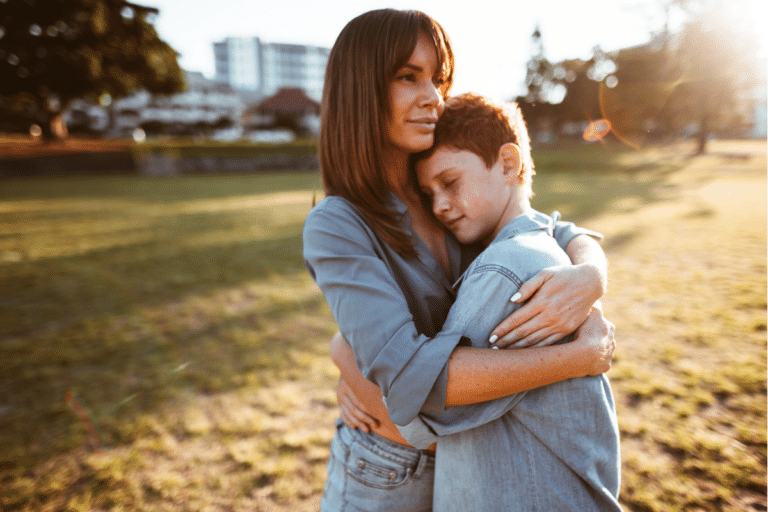Sexual Grooming
Sexual grooming is a process used by child predators to build trusting relationships that they can exploit for sexual abuse. Learn about the signs, stages, and long-term effects of grooming, along with practical preventive measures. Discover how and where to report grooming incidents and find resources for support.

Key Takeaways
- The definition of grooming in the context of sexual abuse, is when someone forms an emotional bond with usually a child or teenager to emotionally, physically, sexually, or financially manipulate them
- While grooming can be perpetrated by anyone, including a trusted individual, The FBI warns that there are more than 50,000 predators online daily
- If you or someone you know was a victim of online grooming, you have rights and options. You can report to law enforcement, to the online platforms, to a government cyber tipline, or seek helping through a service like RAINN. You may also be able to file a civil lawsuit against the perpetrator and/or the online platform
Unlike the sensationalized portrayals in films and the media, the perpetrators of sexual grooming operate quietly, targeting the vulnerable and exploiting their trust. However, increased media coverage of sexual grooming, high-profile legal cases involving famous individuals and institutions, online activism campaigns, hashtag movements, and survivor testimonials have all raised awareness of sexual grooming and its devastating impact on victims.
While there’s been progress in addressing sexual grooming through tougher penalties for perpetrators and improved support systems for survivors, it remains a widespread problem that requires ongoing efforts to address. At Helping Survivors, we work to support and advocate for victims of sexual grooming as they pursue justice.
What is Sexual Grooming?
Sexual grooming refers to the process in which individuals build emotional connections with potential victims. These actions serve to gain victims’ trust and manipulate them into engaging in sexual activities. Predators employ various tactics to establish control, exploit vulnerabilities, and maintain secrecy. Understanding the dynamics of grooming is crucial to combat this insidious behavior effectively.
Who is at Risk? Whom Does it Most Affect?
Anyone, regardless of age, gender, or background, can be a target of sexual grooming. However, children and young adults are particularly vulnerable due to their innocence, trust, and limited life experience. They are least likely to recognize the signs of sexual grooming.
Predators often seek out those who may be emotionally or socially isolated, lacking supportive relationships, or experiencing personal difficulties. Groomers aim to exploit victims for their own gratification by preying on vulnerability.
It’s estimated that one in four girls and one in 13 boys in the United States are victims of child sexual abuse at some point. In many cases, sexual abuse begins as grooming. With the internet being ever-present in children’s lives, predators often find victims they know personally and strangers online.
Grooming still happens to children by people they know and trust; however, online predators are a growing concern today. The FBI warns that there are more than 50,000 predators online daily.
The most common victims of online sexual grooming are females between the ages of 12 and 15. While this is true, any child of any gender and age is at risk of being groomed. Additionally, the perpetrators (groomers) can be adults of any sex and age.
Kathryn Kosmides
Managing Director | Helping Survivors
If you are not sure where to turn, RAINN can help.
Call 800-656-HOPE (4673) to talk confidentially with a trained professional from RAINN.
They can put you in touch with local resources and organizations that can help in your healing journey.
If you want to speak to a lawyer about your experience, we can help.
Stages of Sexual Grooming
We can shed light on how predators exploit their victims by delving into the tactics’ details.
Sexual grooming typically occurs in several stages to manipulate victims and progressively break down boundaries. While the specific methods may vary, the following stages provide a general understanding of the grooming process.
- Targeting: The groomer identifies a potential victim and builds a rapport, often by appearing friendly, helpful, or sympathetic.
- Building trust: The groomer gains the victim’s trust by actively listening, supporting, and exploiting emotional vulnerabilities. They may present themselves as a confidant or mentor, gradually becoming influential in the victim’s life.
- Filling emotional needs: Groomers further exploit their victims by satisfying emotional needs that may be lacking. They offer attention, affection, gifts, or special privileges, creating a sense of indebtedness.
- Isolating the victim: Groomers isolate their victims from friends, family, and other support networks, making them dependent on the groomer for emotional validation and companionship.
- Desensitization: The groomer gradually introduces sexual content, often disguised as jokes, discussions, or exposure to explicit material. This desensitization process aims to normalize inappropriate behavior and reduce the victim’s resistance.
- Maintaining control: Groomers exert control through manipulation, threats, or blackmail, making victims feel powerless and trapped. They may also exploit feelings of guilt or shame to ensure silence and compliance.
Understanding how the grooming process works can help you identify it and protect your children.
Long-Term Effects of Sexual Grooming
The effects of sexual grooming are profound and far-reaching, impacting survivors well into adulthood. By examining these effects, we can better understand the psychological, emotional, and social consequences survivors may face.
How Being Sexually Groomed Affects a Person as They Grow into Adulthood
The traumatic experiences endured during grooming can significantly impact survivors’ well-being, relationships, and self-esteem. Common long-term effects include:
- Trust issues: Survivors may struggle to trust others and develop healthy relationships due to the betrayal experienced during grooming.
- Emotional difficulties: Grooming can lead to depression, anxiety, post-traumatic stress disorder, or PTSD, and other mental health challenges.
- Sexual dysfunction: Grooming can disrupt survivors’ sexual development, resulting in difficulties with intimacy, self-image, and healthy sexual expression.
- Self-blame and shame: Victims often internalize guilt, shame, and self-blame, which can hinder their healing process and prevent them from seeking support.
- Substance abuse and self-harm: Some survivors turn to unhealthy coping mechanisms, such as substance abuse or self-harm, to numb emotional pain or regain control.
Sexual grooming victims have a challenging time overcoming its impact on their lives.
Protecting Against Sexual Grooming
Protecting against sexual grooming is a collective responsibility of individuals, parents, and caregivers. By implementing preventive measures, we can create safer environments for children and young adults, empowering them so they don’t become victims.
Education and Awareness
Promote education on healthy boundaries, consent, and personal safety practices from an early age. Encourage open conversations about these topics to help individuals to recognize and report grooming attempts.
Strong Support Systems
Foster supportive environments where children and young adults feel comfortable seeking guidance from trusted adults. Encourage open communication and provide opportunities for them to develop strong relationships outside their immediate family.
Monitor Online Activities
Stay informed about children’s online activities, including social media use, messaging apps, and gaming platforms. Establish age-appropriate rules and use parental control tools to ensure their online safety.
Recognize Warning Signs
Educate yourself on the signs of sexual grooming, such as sudden changes in behavior, secrecy, unexplained gifts, or excessive attention from an adult. Be vigilant and trust your instincts if something feels off.
Report Suspicious Behavior
If you suspect sexual grooming, report it immediately to the appropriate authorities, such as law enforcement or child protective services. They can provide guidance and take appropriate action to protect potential victims.
How to Report Sexual Grooming

Knowing how to report sexual grooming is crucial to protect potential victims and bring perpetrators to justice. Take the following steps to ensure children’s safety and well-being.
Document Evidence
Gather evidence supporting your concerns, such as text messages, emails, and images. This documentation can aid authorities during their investigation.
Contact Law Enforcement
Contact your local law enforcement agency or the appropriate child protective services to report the suspected sexual grooming. Provide them with all relevant information and cooperate fully with their inquiries.
Seek Professional Support
If you are uncertain about reporting or need guidance, consult with professionals who specialize in supporting survivors of sexual assault, such as therapists, counselors, or helpline services.
Support for Victims and Families
Supporting survivors and their families is essential to help them recover and rebuild their lives. If you are a victim or family member of someone who experienced sexual grooming, know that support is available.
Local Support Services
Local support organizations, shelters, counseling services, and therapy options are available for survivors of sexual grooming. These resources offer specialized assistance and can connect survivors with a support network.
You can call the free sexual abuse hotline at 800-656-HOPE. You can also chat with someone on the website. The National Sexual Violence Resource Center offers information on multiple online communities that help victims of sexual grooming through forums, chat rooms, self-help, and general resources.
You can also speak with a lawyer specializing in sexually related cases. At Helping Survivors, we can help you find an attorney in your area to help you with the legal process.
Want To Speak With A Lawyer?






